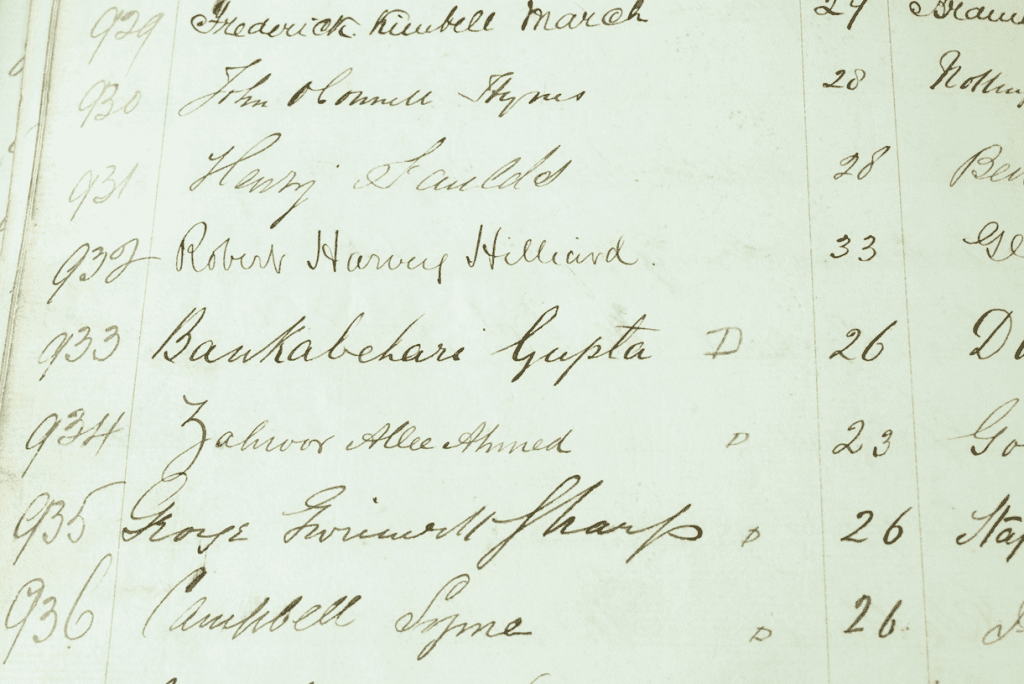by Taweel Ali and Kristin Hay
Between November 2021 and February 2022, the Heritage Team of the Royal College of Physicians and Surgeons of Glasgow hosted an internship as part of the EDI in Scottish Heritage Project. In partnership with Museums Galleries Scotland and the University of Strathclyde, the project aimed to create new opportunities for young people of colour in Scotland to engage with heritage organisations, and to build capacity in anti-racist approaches to heritage. The Heritage Team were delighted to welcome University of Glasgow medical student, Taweel Ali, to explore the history of the first South Asian Licentiates of the College.

Although ‘Glasgow’ is in the name, the Royal College of Physicians and Surgeons of Glasgow is proud to represent a global membership of 15 000 physicians and surgeons from all across the world, with vibrant communities in Pakistan, India and Hong Kong in particular. The relationship between the College and South Asia stretches back 150 years to the mid-nineteenth century: a diverse and complicated history which we are only beginning to unravel in 2022.
Medicine and the British Empire
Unsurprisingly, this history is inextricably intertwined with the history of the British Empire. Throughout the 1800s, Britain colonised a great deal of South Asia. The ‘crown jewel’ of their imperial enterprise was ‘British India’ a region comprised of present-day Bangladesh, Pakistan, and India. It has been well-established by historians that medicine functioned as a tool of empire, and the regulation of medical practice in Britain extended to its colonies.

From the mid-nineteenth century, in line with medical reforms in Britain, the Colonial Government in India began a more aggressive and concerted effort to promote Western medical thought and exclude practices which were considered outside British medical orthodoxy. This meant that indigenous practitioners had to register with the British General Medical Council (GMC) and obtain licences from Britain to practice medicine in their home country. Whilst on the surface, this was a positive step in raising the standard of medicine, it also created a medical hierarchy where indigenous medicine (and its practitioners) was considered inferior to British medicine.
It is here that the rationale for medical migration by South Asian practitioners becomes clear. The imposed superiority of British medical education, licencing and practice created a system wherein South Asian practitioners could not progress in their career without registration to the GMC and strong links to British practices. Thus, it became necessary for their careers to obtain a medical licence in Britain, even if their intention was to practice at home.
The First South Asian Licentiates
For practitioners of South Asian Heritage who had received a Western medical education at home, one of the pathways to obtaining a medical licence was through examination by one of the British medical Colleges. Thus, from the 1870s the Royal College of Physicians and Surgeons of Glasgow (the titled the Faculty of Physicians and Surgeons of Glasgow) saw an increased uptake in licentiates from the British Colonies.
Taweel’s research utilised the licentiate’s register, an old index in the archives of the College with handwritten entries on every person licenced in the late 19th century. Through this, he was able to compile basic profiles of South Asian licentiates spanning from 1872 – 1879. These profiles served as a solid base for which to gain more insight into the licentiates’ lives.

The first two recorded South Asian doctors to be licenced by the College were Bankebehari Gupta from Daka, Bangladesh, and Zalnoor Allee Ahmed, from Guwahati, India. Both were licensed on the same day in 1872 and appear next to each other on the register. Both also moved to London after registering, and lived close to each other. This was a common trend in early South Asian Licentiates, as in 1878 Kaikhosroo Ratanjee Divecha, Edulji Palanji Frenchman, Hormasji Dosabhai Pesikaka, and Cooverji Cawasji Vaid – also all obtained their licenses on the same day from the College. They were all similar ages, were trained in Bombay, and moved to London after entering the Medical Register. It is probable that they were at the same cohort in university and travelled to Britain together.
Although the future careers of these practitioners was outside the scope of his internship, Taweel was able to trace the practice of Zalnoor Allee Ahmed. Ahmed was a distinctive example as he studied at both the University of Calcutta and the University of Glasgow, earning and MB and MD from the respective institutions. He was also one of the rare few indigenous practitioners to join the Indian Medical Service, taking part in several campaigns, earning medals and even serving in World War One.
Zalnoor’s story and others like it barely scratch the surface of something much, much larger: the relationship between medicine and Empire, the origins of medical migration, and the challenges faced by indigenous practitioners within the colonial military complex. There is so much more to unpack about these doctors and their stories, and so much history waiting to be discovered and talked about.
In celebrating South Asian Heritage Month, we honour the first South Asian licentiates of our College whilst also acknowledging the oppressive role of Empire and barriers they faced in pursuing a medical career. We also recognise the historic erasure of these trailblazers, and the duty of Heritage organisations to ensure that EDI is central in the stories we tell about our past.
To find out more about the EDI in Scottish Heritage project, watch the recording of our live Medical Heritage Event:


Leave a Reply
You must be logged in to post a comment.